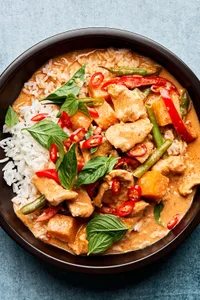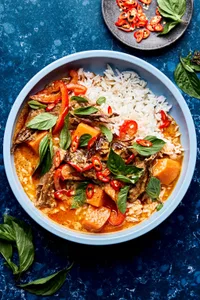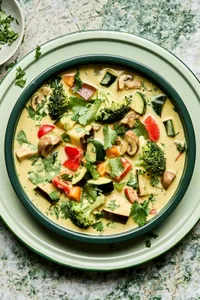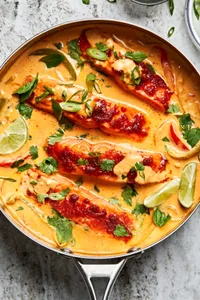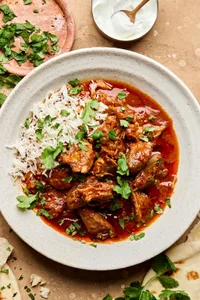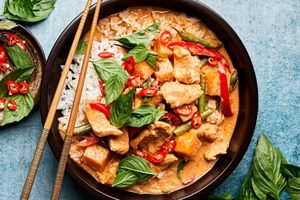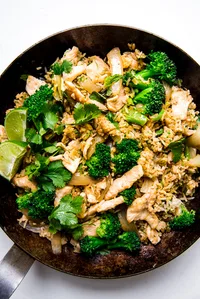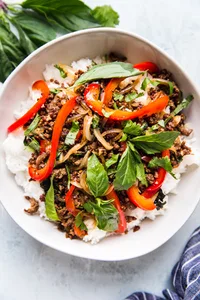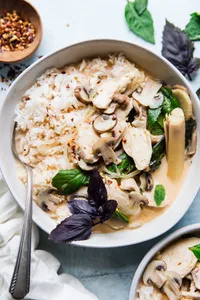We turn to this creamy and delicious Thai red curry recipe when it’s time for a grocery run but we want to use up all the odds and ends that are in the fridge first. You only need a few base ingredients to make the vibrant red curry sauce, and you can sub in almost any veggie or protein once you’ve made the sauce. Got chicken to use up? Throw it in! Need to make it vegetarian? Add more veggies or tofu if you’ve got it. Like all of our favorite recipes, this red curry is very forgiving, healthy and always so delicious. Serve it with our easy, fluffy White Rice. And if you need an even heartier red curry riff, try our seriously rib-sticking Red Curry Beef!
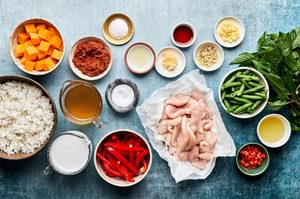
Base Ingredients For Red Curry
Scroll down for the full recipe with measurements below.
- Red curry paste: Good red curry starts with good curry paste. If your curry paste is bland, it’ll be almost impossible to make your curry taste as good as it does when you get Thai take out. Luckily, red curry paste is pretty darn easy to find at most well-stocked grocery stores.
- Fresh garlic, ginger, lime, Thai basil and lemongrass: Adding these aromatics is even more important if you end up with a slightly lack-luster curry paste. That said, you could skip the lemongrass if you’re intimidated by it, but it’s generally available now (even Trader Joe’s has it) and adding a fresh lemongrass will really punch up your curry. If you can’t find Thai basil, which is a purple-tinged and very fragrant variety of basil, regular basil is OK.
- Coconut milk: Full fat coconut milk, please! This curry recipe is full of veggies, and generally really healthy, so indulge a little with the coconut milk, your taste buds will be glad you did.


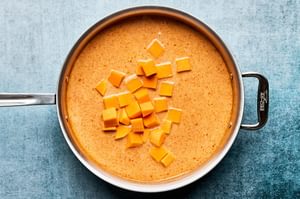
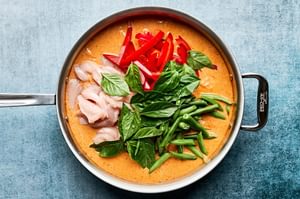
Our Favorite Thai Red Curry Paste
Thai red curry paste is the make-or-break ingredient in this recipe. All Thai red curry pastes will have some blend of Thai chilies and southeast Asian herbs and spices, there is quite a bit of variation from brand to brand, and frankly some brands are downright bland. Which is so weird! Because we expect red curry paste to be a powerhouse ingredient that delivers tons of flavor in every spoonful.
We’ve used a lot of red curry pastes over the years (if you haven’t tried our ultra-popular Turkey Meatballs in Red Curry Sauce, get on that!) and we are really loyal to the Mae Ploy red curry paste. It has a serious dried chili kick, and tons of heady kaffir lime peel and salty, funky shrimp paste in the mix. It just tastes right, and it's the reason that our red curry recipes taste as good as what you’d get in a restaurant.
If you can’t do shrimp or want to use a vegetarian curry paste, those do exist! MaeSri Red Curry Paste is another highly recommended by a lot of folks, and their red curry paste is 100% vegetarian and easy to find online. The bottom line? You may need to play around a little to find the curry paste that you love best! But once you’ve nailed down a go-to, and stocked your pantry with it, you’re golden!
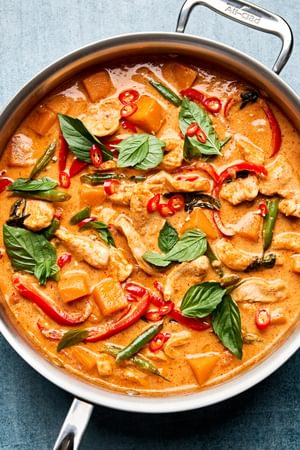
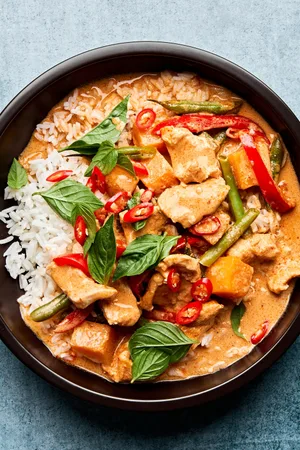

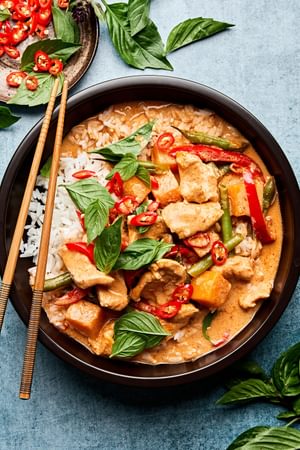
Red Curry Tips + How To Store Leftovers
- A basic formula for swaps and substitutions: Red curry is a forgiving meal that can handle most of whatever you throw at it (or in it). Small Japanese eggplant is a wonderful addition in the summer. In the winter, curry is a great way to use up root veggies. There really are no rules, you can feel free to experiment. Generally, we aim for a balance of heartier vegetables (this could be carrots, potatoes, squash, pumpkin) with some green and tender veggies, like maybe snap peas, cabbage or broccoli. The key is just to have some variety in the mix.
- Curry is delicious leftover! It’ll keep in an airtight container for at least three days. It reheats well in the microwave but between us, we even enjoy gobbling it up cold.
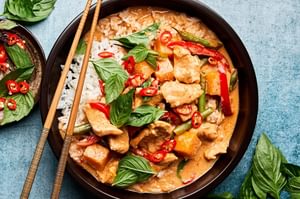
More Ways To Use Red Curry Paste
Get Cooking
For more recipe inspiration, follow us on Facebook, Instagram, TikTok and Pinterest or order our cookbook. We love when you share your meals. Tag us on Instagram using #themodernproper, and we’d love to hear what you think of this recipe in the comments below. Happy cooking!
